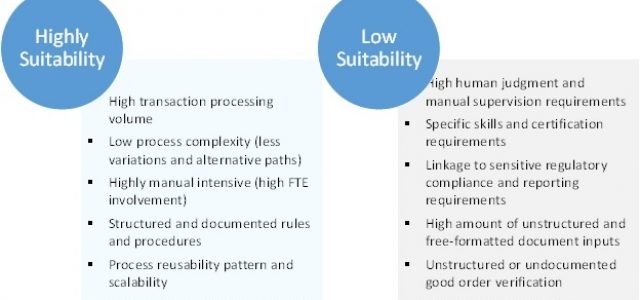You Don’t Need To Be A Digerati To Master Digital Marketing
I overheard a conversation the other day between two service professionals who are over 40 years of age. One said: “I don’t get why young people always have to be on their cell phones. They even walk down the street with their eyes glued to those screens. The real world is passing them by.”
The other professional, maybe a little older and a little wiser said: “They’re not missing the real world. They’re just in a different real world from you and me.” Maybe you know the feeling? The world of the digerati is a conundrum to people who didn’t grow up with all of these connected devices.
But I think it’s important to recognize that the earth has moved beneath our feet. There is no going back. Digital is here to stay. A lot of mature service professionals don’t feel entirely comfortable in this world. But more than that, they’re not sure how to use all of this technology, this new culture, to achieve their business goals. In this post, I’d like to share 6 key insights that can help you leverage the power of digital marketing.
The Analog To Digital Transformation
Before I share the 6 insights, I want to quickly describe the analog to digital transformation for marketing service-based organizations. For several decades, service firms went to market and acquired new clients using referrals, public speaking, trade publications, conferences and tradeshows, strategic alliances and industry associations.
The first foray, for most service firms, into digital marketing started back in the 1990s with two game-changing technologies: websites and email marketing. But then the pace of change really picked up, in the early 2000s, and digital disruption took over. Here are just some of those game-changing technologies that quickly came on the scene:
- Blogging became a popular way to share ideas and build a following.
- Webinars gave subject matter experts a way to speak to people all over the globe.
- Digital video and high-speed internet made streaming video possible.
- Marketing automation platforms helped marketers to track and score all of these clicks.
- E-books, white papers and infographics created idea-rich assets.
But the real game-changer, the big kahuna, for digital marketing was social media. Properties like Facebook, LinkedIn, Twitter and Google+ proliferated. They’re still growing and changing the way people connect, communicate and discover solutions.
So if you’ve felt overwhelmed by the pace of change over the last decade or so, it’s for good reason. The world that I learned to market in, uh-hum, just a few years ago, uh-hum, is no longer.
The 6 Key Insights
While the transformation can be challenging, I want you to know that service professionals over the age of 40 absolutely can benefit from this new landscape. The technology platforms do not care what date is listed on your birth certificate.
But the real obstacle for most mature executives is that they don’t want to be swallowed up by a world of endless digital streams. They don’t have time for this. They don’t want to be plugged in 24 hours a day. Some people wonder if that is what’s necessary to achieve digital success?
I don’t believe that is the case. I believe that with the right mindset, the right strategy, the right approach and touch, you can realize all of the benefits of digital marketing while avoiding those things you don’t like.
Here are 6 key insights that can help you do this:
- Digital is an ecosystem, not a channel
- You’ve never had a better opportunity to connect with the right people
- Wisdom is your strategic advantage
- You don’t have to give in to the distraction culture
- You need to have a strategy because the digital world is often chaotic
- Focus on your ideal client
Let’s explore each of these in greater detail.
___________________________________
Key Take-Away
Your greatest contribution to digital marketing at your company may be your wisdom.
___________________________________
Digital Is An Ecosystem, Not A Channel
A moment ago I described all of the different ways service firms can now go to market using digital marketing. Did it really seem to you like all of that technology, all of those choices for marketing, are really just a channel? It’s so much bigger than that.
For you to be a successful digital marketer, the first thing you have to realize is that digital is an ecosystem, not a channel. What you do in one part of the ecosystem will impact the other parts of the ecosystem. But more importantly, if you use digital marketing effectively, you can connect the different parts of the ecosystem to make them work even harder for you.
For example, you could put a blog-post on your website and hope the someone might read it. Or you could take that same blog content and publish it on LinkedIn. If the content is good, you might get views, likes and shares. If you’re smart, you’ll add a video to the blog-post because this increases traffic and engagement.
But if you are really smart, you could make an offer in that blog-post on LinkedIn to visit a landing page on your website to get even more ideas. This allows you to connect 5 different technology platforms under one blog-post:
- LinkedIn’s Pulse platform
- Your video hosting platform
- Your website
- Your marketing automation platform that captures the registration
- Your CRM system that shows you the lead score for your users
This is just one of hundreds of ways that these tools and platforms can be combined into a powerful ecosystem that works smarter for you. If you want to be successful with digital, you have to realize that it is an interconnected ecosystem, not just another channel.
You’ve Never Had A Better Opportunity To Connect With The Right People
A lot of mature service professionals believe that digital marketing, particularly social media, is just a waste of time. I hear them say that they don’t have time to be looking at silly cat videos and keeping up with all of the latest posts. More than that, they find this to be an interruption to their work-day.
I’ll address the interruption topic in a moment. But first I want to point out the value of social networks. I want you to think about it this way. In all of my years of experience, marketing professional service firms, the number one obstacle to growth is an absence of opportunities to get in front of the right people and tell the right story. If you can do that, you grow.
I have seen this over and over again for service-based companies. Most of our clients operate in very niche markets where it doesn’t make sense to buy mass-media ads to try to reach a very narrow audience. This means that most companies have had to rely on niche media and niche events over which they have no control.
For instance, I have a client in the pharmaceutical consulting space. They used to place a great deal of emphasis on four conferences that they attend each year. This meant that they were limited in telling their story to the right people to just four times a year.
That has all changed. With LinkedIn, the very people you want to connect with, the right people with budgets and decision-rights, are already in this network. They are probably even actively looking for ideas right now. The opportunity to connect with them is completely within your control. You’ve never had a better opportunity to take control of your destiny and connect with great prospects when you choose, not when someone else chooses.
Wisdom Is Your Strategic Advantage
We’ve all heard the old saying that wisdom comes with age. Your strategic advantage, in the age of digital, is your wisdom, the things you now know that you didn’t know 20 years ago. For you to become a successful digital marketer, you need to leverage your wisdom.
I’ve said in other posts that content is king in digital marketing. In fact, I would say that content marketing is digital marketing. But the question becomes, how valuable is that content at helping service firms tell the right story, make the right impression and pull great prospects into sales dialogue?
In my experience, most content marketing initiatives at service firms fail. The reason they fail isn’t because of the networks or the technology. They fail because the ideas in the content are not all that good. I’ll give you a specific example.
Let’s assume that I have two staff members who are brilliant, passionate and very capable. But they just can’t get along. Their personalities clash and their disagreements have begun to disrupt my business operations.
I go onto LinkedIn and search for a consulting organization who specializes in conflict resolution for professionals. I find a few people and one of them even offers a white paper. I click through to the landing page, register for it, download it and read it.
As I read the white paper, I’m underwhelmed. I say to myself: I’ve already heard most of these ideas, tried them and they haven’t worked. What impression has that company made on me? Do I think they have insights? Am I inspired to want to work with them? Am I going to reach out and offer them an engagement? I don’t think so.
I believe this process repeats itself a thousand times a day right now. Busy decision-makers with budget, need and a reason to act are looking for ideas. They are willing to give up their contact information in exchange for the ideas. But if the ideas in the content are weak, they are not inspired to move ahead.
This is where your experience, your wisdom, can make a real difference. Your greatest contribution to digital marketing at your company may be your wisdom.
You Don’t Have To Give In To The Distraction Culture
I was reading an article a couple of days ago about a new technology that is quickly replacing email as a means of internal communications in larger enterprises. At the bottom of the article, a senior business person lamented: “we had this platform and I turned it off after two days. I just couldn’t stand it beeping at me every five minutes.”
This is what I have come to call the distraction culture. Younger people who have grown up with all of these digital devices don’t seem to mind the incessant beeps and buzzes. But more mature executives, especially those who thrive on uninterrupted blocks of thinking time, typically hate those kinds of distractions. If that sounds like you, I have some good news.
You do not have to give in to the culture of endless digital distractions to reap the benefits of digital marketing. You can choose to set aside a few minutes each day or even a couple of times a week to commit to digital marketing. You can also turn off any form of communication that becomes annoying. All of the digital platforms that exist today have configuration options for how, what, and when they communicate with you.
You Need To Have A Strategy Because The Digital World Is Often Chaotic
A few years ago we made the transition at my company from primarily analog to primarily digital marketing. It took us about 3 years to fully make this transition and realize the kinds of success we were looking for. But that success was made possible because we had a strategy.
For you to succeed in digital, you need a strategy too. What should you include in your digital strategy? Here are some ideas to get you started in the right direction.
First, I recommend that you choose some digital channels that you know you can manage. I outlined several of those a moment ago. I also recommend that you choose channels that feed each other, because digital is an ecosystem.
But no matter what channels you choose, I recommend these key components:
- You need a specific set of goals that you want to accomplish.
- You need a plan that includes channels that most likely help you accomplish the goals.
- You need metrics that allow you to measure your progress against goals.
- You need time-based milestones, at which point you will analyze your progress, ask yourself what’s going well and what needs to be improved so you can make course corrections.
Focus On Your Ideal Client
The final insight I want to share with you may be the most important. Most digital marketing strategies today focus on trying to build awareness with large faceless audiences based on buyer personas. I don’t believe in this. I don’t think they work.
I believe in the audience of one – the one person who is in a position to say yes to you, to award you business, to become your next best client. When you use digital marketing, think of the one, not the masses. Picture your actual ideal client in mind.
I recommend that you build an ideal client profile. I recommend that you always evaluate your digital marketing efforts in light of how your ideal client will be attracted to and impacted by your content.
For most small to medium-sized service-based organizations, it is nearly impossible to generate a groundswell of interest from digital channels. But you absolutely can get your story, your insights and your wisdom in front of people who need what you offer. You can pull them through a digital funnel until they are ready to be in serious sales dialogue.
Where To Go From Here
If you’d like to learn more about how to do this, I have a recommendation for you. I’ve developed an action guide called 7 Steps To A Website That Drives Service Revenue. This free resource contains 7 videos and 7 downloadable tools you can use to build a powerful digital strategy that is unique to your business. If you want to become an effective digital marketer, no matter your age, I know this resource will really benefit you.
About the author
Randy Shattuck is a senior marketing executive, marketing automation guru and founder of The Shattuck Group, a full-service marketing firm that specializes in growing professional services firms.
Article by channel:
Everything you need to know about Digital Transformation
The best articles, news and events direct to your inbox
Read more articles tagged: Featured






